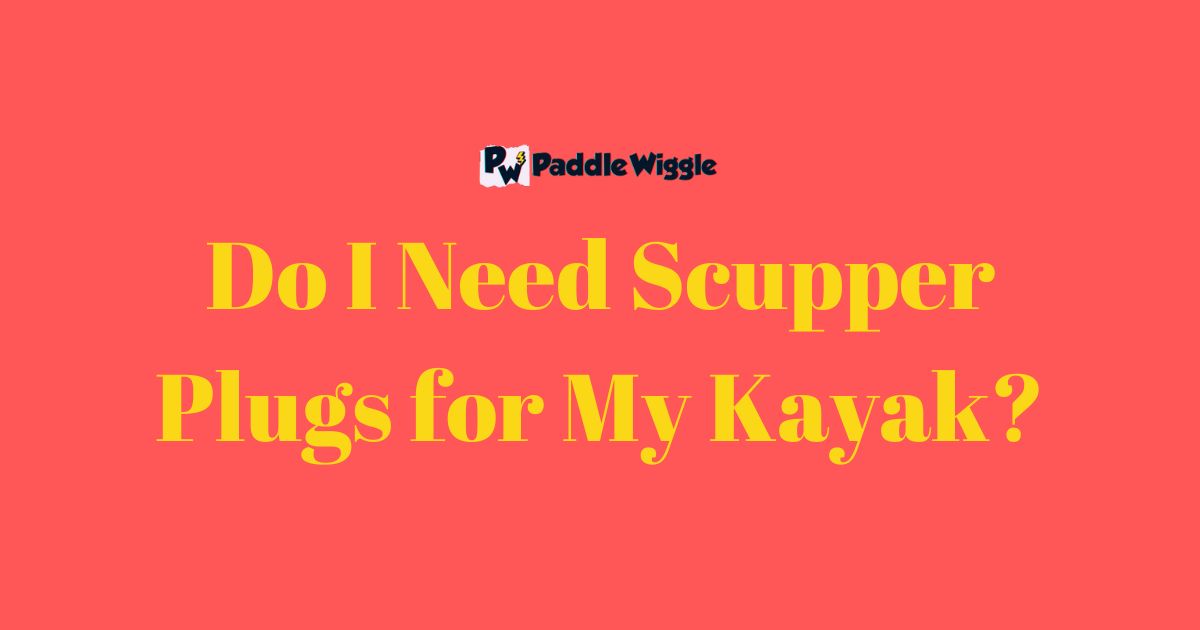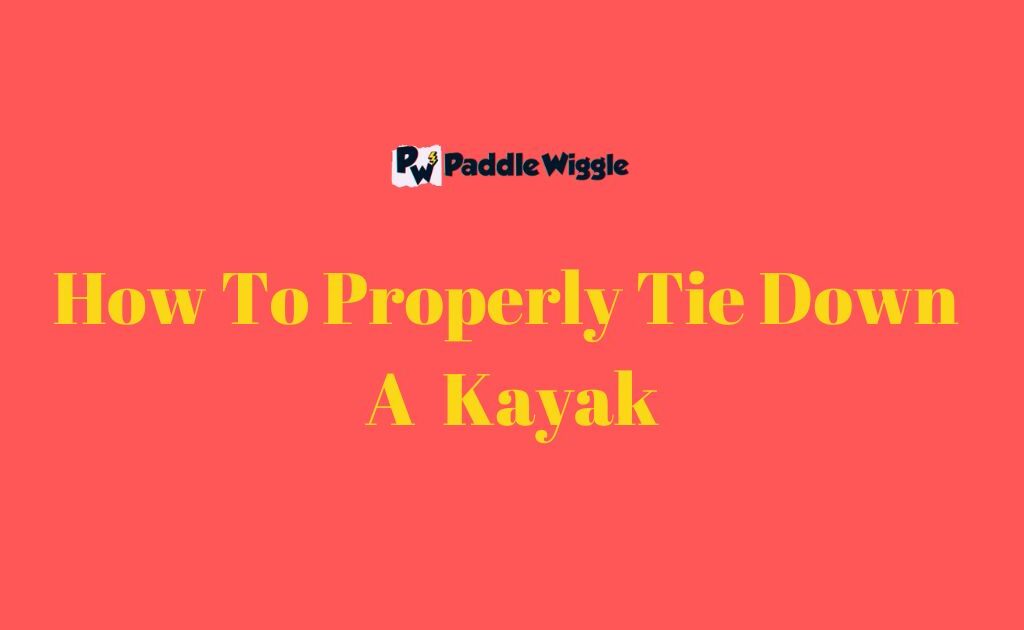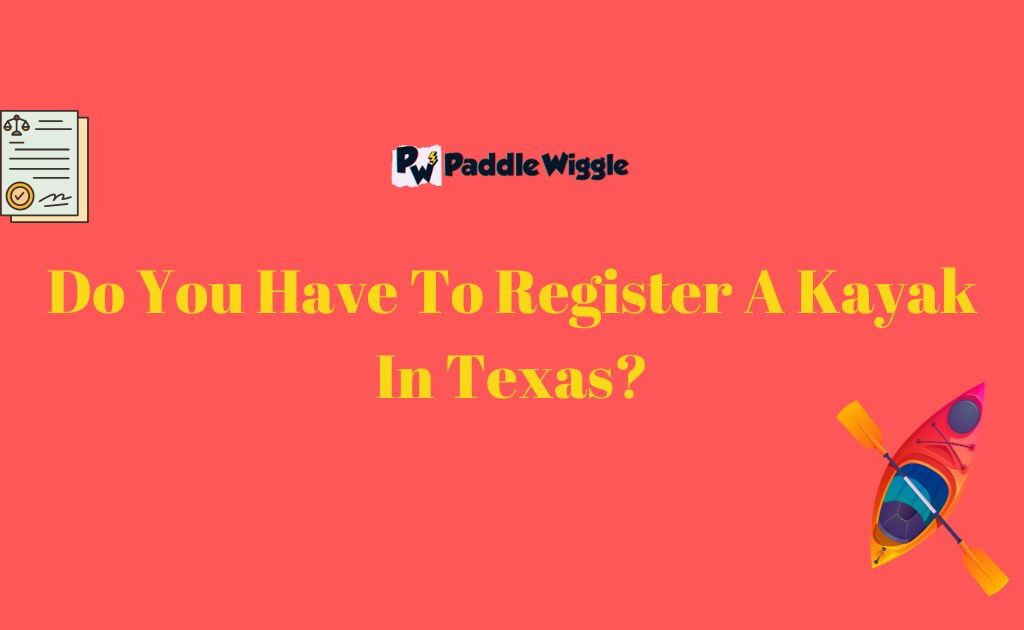If you’re a kayak enthusiast or considering purchasing a kayak, you might be wondering about the need for scupper plugs. Scupper plugs are small devices designed to seal the scupper holes in a sit-on-top kayak. These holes allow water to drain from the cockpit but can sometimes let water in as well.
Scupper plugs are not always necessary for every kayaking situation, but they can be beneficial depending on the conditions and your preferences. Scupper holes in sit-on-top kayaks drain water from the cockpit, but they can also let water in, especially in rough conditions.
Using scupper plugs keeps the cockpit drier, which is helpful in calm waters or when you want a more comfortable ride. However, if you’re in rougher waters and need better drainage, it’s better to leave the scupper holes open.
This guide will explain what scupper plugs are when you might need them, and how they can make your kayaking experience more comfortable by keeping your cockpit drier.


Contents
Why Use Scupper Plugs?
When kayaking, safety, and performance are crucial. One common question is, “Do I need scupper plugs for my kayak?” Scupper plugs serve various functions, enhancing your kayaking experience. Let’s explore the reasons why you should use scupper plugs.
Protection From Water Infiltration
Kayaking involves paddling through water, and sometimes, water can enter the kayak through the scupper holes. Scupper plugs prevent this water infiltration, keeping the kayak interior dry. This is especially important in rough waters.
Can you use a kayak without scupper plugs? Yes, but there are risks. Without plugs, water can easily flood the kayak. Here are some key benefits of using scupper plugs for protection:
- Dry storage: Keeps your gear and supplies dry.
- Enhanced comfort: Prevents you from sitting in water.
- Safety: Reduces the risk of capsizing due to water weight.
In summary, scupper plugs offer critical protection from water infiltration, ensuring a safer and more enjoyable kayaking experience.
Water Drainage
Water can enter the kayak from paddling or waves. Effective water drainage systems in kayaks are vital. Scupper plugs can play a dual role. While they block water from entering, they can also be removed to allow water to drain out.
Understanding do you need plugs in a kayak involves knowing when to use them for drainage. Here are some scenarios:
- Calm waters: Keep plugs in to stay dry.
- Rough waters or rain: Remove plugs to let water drain out.
- Fishing: Use plugs to prevent water from disturbing your catch.
A table might help illustrate the decision-making process:
| Condition | Scupper Plug Use |
| Calm waters | Insert |
| Rough waters | Remove |
| Fishing | Insert |
Effective water drainage is essential for a safe kayaking experience, making scupper plugs a valuable tool.
Buoyancy And Stability
Buoyancy and stability are key to a successful kayaking trip. Scupper plugs contribute to both aspects. By preventing water from entering the kayak, they help maintain its buoyancy.
Without scupper plugs, water can enter, making the kayak heavier and less stable. This is crucial when asking can you use a kayak without scupper plugs. Using plugs can:
- Improve stability: Keeps the kayak balanced.
- Maintain buoyancy: Prevents sinking from excess water.
- Enhance control: Allows better maneuverability.
Stability and buoyancy are fundamental for both beginners and experienced kayakers. By using scupper plugs, you ensure a safer and more controlled kayaking experience.
Advantages Of Using Scupper Plugs In A Sit-on-top Kayak?
Do you own a sit-on-top kayak? You might wonder about the benefits of scupper plugs. Scupper plugs can make your kayaking experience more enjoyable. Let’s dive into the advantages of using scupper plugs in a sit-on-top kayak.
1. Enhanced Stability
Scupper plugs can enhance the stability of your kayak. They prevent water from entering through scupper holes. This keeps your kayak balanced and steady.
2. Dry Ride
A dry ride is one of the biggest benefits of scupper plugs. They block water from splashing into the cockpit. You and your gear stay dry.
3. Improved Speed
Scupper plugs can help improve your kayak’s speed. A dry kayak is lighter. This means you can paddle faster and with less effort.
4. Better Comfort
Water pooling around your feet can be uncomfortable. Scupper plugs keep the water out. This makes your ride more comfortable.
5. Versatility
Scupper plugs are versatile. You can remove them if you want water to drain out. This is useful in rough waters or rainy conditions.
6. Easy Installation
Installing scupper plugs is easy. Most plugs fit standard scupper holes. You just push them in or pull them out as needed.
7. Cost-Effective Solution
Scupper plugs are a cost-effective way to improve your kayaking experience. They are affordable and offer multiple benefits.
| Advantages | Description |
| Enhanced Stability | Prevents water entry, keeping the kayak balanced |
| Dry Ride | Keeps you and your gear dry |
| Improved Speed | Lighter kayak allows faster paddling |
| Better Comfort | Prevents water pooling around feet |
| Versatility | Can be removed for water drainage |
| Easy Installation | Simple to install and remove |
| Cost-Effective Solution | Affordable and offers multiple benefits |
Types Of Scupper Plugs
Kayaking enthusiasts often ask, “Do I need scupper plugs for my kayak?” Scupper plugs play a crucial role in keeping water out of the kayak’s cockpit. There are different types of scupper plugs designed to fit various kayaks. Understanding the types of scupper plugs will help you make an informed choice.
Universal Scupper Plugs
Universal scupper plugs are designed to fit a wide range of kayak models. They are made from flexible materials like rubber or silicone. These plugs adapt to various scupper hole sizes. Here are some key features of universal scupper plugs:
- Versatility: Can fit multiple kayak brands and models.
- Easy to Use: Simple to install and remove.
- Durable: Made from long-lasting materials.
Many kayakers prefer universal scupper plugs for their flexibility. They are perfect for those who own multiple kayaks. You can use one set of plugs for all your kayaks. Below is a table comparing popular universal scupper plugs:
Universal scupper plugs offer a budget-friendly solution. They are ideal for beginners and casual kayakers. They ensure a dry and comfortable kayaking experience.
Custom-fit Scupper Plugs
Custom-fit scupper plugs are specifically designed for certain kayak models. These plugs provide a snug and secure fit. They are often made by the same manufacturers as the kayaks. Here are some benefits of custom-fit scupper plugs:
- Perfect Fit: Tailored to fit specific kayak models.
- Enhanced Performance: Better water sealing capabilities.
- High Quality: Often made from premium materials.
Custom-fit scupper plugs are ideal for serious kayakers. They ensure maximum performance and comfort. Below is a table showcasing custom-fit scupper plugs for different kayak brands:
For the best kayaking experience, choose custom-fit scupper plugs. They provide a precise fit, ensuring no water gets inside your kayak. They are worth the investment for avid kayakers.
When To Use Scupper Plugs In A Kayak
Kayaking is a thrilling adventure, but staying dry and comfortable is essential for an enjoyable experience. Many paddlers ask, “Do I need scupper plugs for my kayak?” Understanding when to use scupper plugs in a kayak can help you make the most of your time on the water. Scupper plugs can be crucial in various situations, ensuring you remain dry and your kayak performs optimally.
Calm Water Situations
Calm water situations present a great opportunity to utilize scupper plugs effectively. On placid lakes and slow-moving rivers, the requirement for scupper plugs often arises to keep water from splashing into the kayak. Here’s why you might need them:
- Minimize water ingress: In calm waters, the primary concern is often splashing water rather than waves. Scupper plugs help in keeping the cockpit dry.
- Enhanced comfort: Dry seats and footwells improve comfort, especially during long paddles.
Key points to consider:
| Condition | Reason |
| Calm Lakes | To prevent water splashes from entering |
| Slow-moving Rivers | To keep the kayak interior dry |
Utilizing scupper plugs in these situations can make your kayaking experience more enjoyable and comfortable.
Cold Weather Paddling
Cold weather paddling demands particular attention to staying dry and warm. Using scupper plugs in a kayak during cold conditions can be a necessity for several reasons:
- Prevent water entry: Cold water can quickly make you uncomfortable. Scupper plugs block the scupper holes, keeping frigid water out.
- Retain warmth: A dry kayak interior helps maintain body temperature, crucial in cold weather.
Why it’s essential:
| Factor | Importance |
| Temperature | To avoid hypothermia |
| Comfort | To keep warm and dry |
In these conditions, having scupper plugs can be the difference between a pleasant paddle and a miserable one.
Transporting Your Kayak
Transporting your kayak may not immediately seem like a scenario where you’d need scupper plugs, but it can be quite beneficial. Here’s why:
- Prevent water leakage: When moving the kayak, residual water can leak through scupper holes. Plugs prevent this.
- Keep your vehicle dry: A dry kayak means a cleaner car or transport vehicle.
Benefits during transport:
| Aspect | Benefit |
| Water containment | Reduces mess inside the vehicle |
| Kayak integrity | Prevents internal water damage |
Using scupper plugs during transport ensures your kayak and vehicle stay dry, making the entire process smoother.
Alternatives To Scupper Plugs
Kayaking is a thrilling water sport, but keeping your kayak dry is crucial. Scupper plugs are common for blocking scupper holes. But what if you don’t have them? This blog explores alternatives to scupper plugs that can keep your kayak dry and your adventure enjoyable.
Tape Or Foam
One of the simplest alternatives to scupper plugs is using tape or foam. These materials can seal the scupper holes effectively. Here are a few options you can try:
- Duct Tape: Affordable and easy to apply. Make sure to use waterproof duct tape to cover the scupper holes.
- Foam Plugs: You can create DIY foam plugs from pool noodles or similar foam materials. Simply cut them to size and fit them into the scupper holes.
Using tape or foam has its own pros and cons. Here’s a quick comparison:
| Material | Pros | Cons |
| Duct Tape | Cheap, easy to use, readily available | May not fit perfectly, and can degrade over time |
| Foam Plugs | Customizable, reusable, no residue | May not fit perfectly, can degrade over time |
These solutions are quick and inexpensive. They work well for short trips or casual kayaking. Always test these materials in a safe environment before your adventure.
Dry Bags Or Containers
Another effective alternative is using dry bags or containers. These options can keep your belongings dry even if water enters your kayak. Here are some choices:
- Dry Bags: These are waterproof bags that seal tightly. You can store your gear and keep it dry even if the kayak gets wet.
- Waterproof Containers: These are hard-shell containers that offer extra protection. Ideal for electronics or other sensitive items.
Let’s compare dry bags and waterproof containers:
| Item | Pros | Cons |
| Dry Bags | Flexible, lightweight, various sizes | Can be punctured, less rigid |
| Waterproof Containers | Durable, crush-proof, secure | Heavier, less flexible |
Both dry bags and containers are useful for kayaking. They keep your essentials dry, offering peace of mind on your trips. Choose the one that best fits your needs and enjoy a worry-free kayaking experience.
Tips For Using Scupper Plugs
Using scupper plugs can enhance your kayaking experience by keeping water out of your kayak. Knowing how to use these plugs properly ensures you stay dry and comfortable. Here are some valuable tips for using scupper plugs.
Proper Installation
Installing scupper plugs correctly is key to preventing water from entering your kayak. Follow these steps to ensure a secure fit:
- Identify the scupper holes: Check your kayak’s manual to locate the scupper holes.
- Select the right plugs: Ensure the plugs match the size of the scupper holes.
- Insert the plugs: Push the plugs firmly into the holes until they are snug.
- Check the fit: Ensure the plugs are tight and secure.
If the plugs are loose, water can seep in, defeating their purpose. Proper installation involves ensuring the plugs are airtight. Some kayaks have different-sized scupper holes, so double-check the fit.
Using a table to compare plug sizes can help:
| Scupper Hole Diameter | Plug Size |
| 1 inch | Small |
| 1.5 inches | Medium |
| 2 inches | Large |
Always test the plugs before heading out. Fill your kayak with a little water to see if any leaks through. If you notice water getting in, adjust the plugs or try a different size.
Regular Inspection
Regular inspection ensures your scupper plugs remain effective. Check the plugs before and after each trip. Here’s a simple checklist:
- Check for damage: Look for cracks or wear on the plugs.
- Ensure a tight fit: Reinsert the plugs and ensure they are secure.
- Clean the plugs: Remove any debris or dirt that may affect the fit.
Inspecting the plugs helps you identify any issues early. Damaged plugs can let water in, so replace them as needed. Cleaning the plugs ensures they seal properly and extend their lifespan.
A quick inspection can prevent unpleasant surprises while kayaking. Maintaining the plugs in good condition keeps you dry and your kayak performing well.
Replace worn plugs to avoid leaks. Carry extra plugs during long trips for emergencies. This simple practice ensures you are always prepared.
Can I Use My Kayak Without Scupper Plugs?
Yes, you can use your kayak without scupper plugs. Water may enter, but it will also drain out.
Do Scupper Plugs Affect Stability?
Yes, scupper plugs can affect stability. They help keep water out, improving buoyancy. Unplugged scuppers can drain water, enhancing stability in rough conditions.
Final Words
Scupper plugs can enhance your kayaking experience by keeping you dry and comfortable. They are helpful for sit-on-top kayakers who want a drier and more comfortable ride. While not always needed, they are useful in rough waters or if you prefer to keep your cockpit dry.


